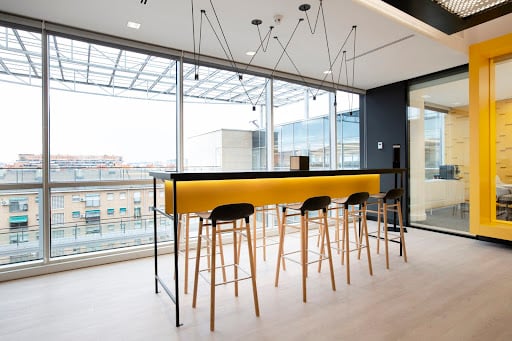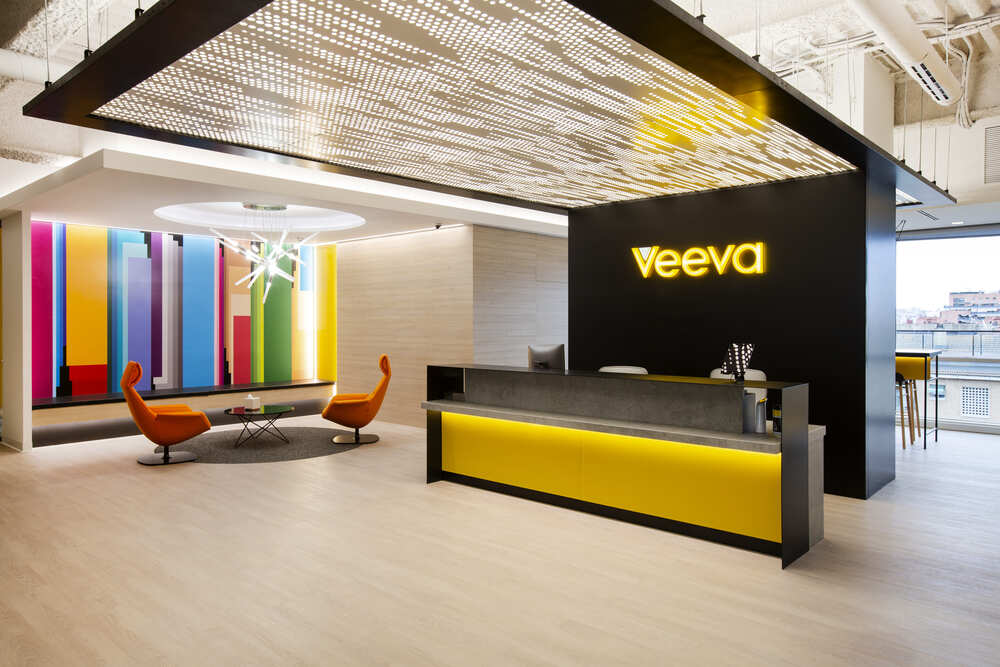People spend most of their time inside buildings, but have you ever wondered how healthy these indoor environments are? This is essential for WELL certification, a building assessment tool that, through the implementation of different strategies, has the well-being and health of its occupants as its main objective.
In this article, we tell you all about it and how it is the first certification that prioritises the comfort of users, analysing the relationship between their health and the built environment in which they live and work.
In addition, throughout the article we show you a real example of a new office project carried out with Areazero20, an interior design studio specialising in design and refurbishment projects.
What is WELL certification?
 WELL Building Standard is an assessment tool for buildings that allows analysing the characteristics of the built environment in terms of health and well-being of its occupants. Based on performance and not on prescription, and being necessary to demonstrate the fulfilment of all requirements through a final performance verification, it is the first certification where the health and comfort of the users are the central and exclusive focus.
WELL Building Standard is an assessment tool for buildings that allows analysing the characteristics of the built environment in terms of health and well-being of its occupants. Based on performance and not on prescription, and being necessary to demonstrate the fulfilment of all requirements through a final performance verification, it is the first certification where the health and comfort of the users are the central and exclusive focus.
The WELL certification takes up the concept of health provided by the WHO, which defines it as physical, mental, and social well-being, and incorporates it into its scoring system to analyse the presence of such well-being in the enclosed spaces where we usually live, work, and relax.
WELL Categories
This certification gathers its criteria in 10 different categories that have mandatory guidelines (prerequisites) and improvement guidelines (optimisation). These are:
- Air: ensures improved air quality inside the building, as all indicator parameters are monitored. To achieve this, various strategies are implemented where the elimination or reduction of pollution are included.
- Water: ensures providing access to high-quality water. There must be control of legionella, water treatment, available drinking water sources, and proper management of moisture occurrence.
- Food: encourages healthy eating and arranges the designated environment to make this the easiest option to choose. The availability of fruits and vegetables, and nutritional transparency are necessary requirements.
- Lighting: the main objective is to improve occupant comfort through the design of artificial and natural lighting systems, following circadian rhythms.
- Movement: aims to encourage physical activity and an active lifestyle in order to avoid a sedentary lifestyle. To achieve this, opportunities for physical activity are created and improved, such as the creation of a space for sports activities, or the promotion of using stairs with a visible and open design.
- Thermal Comfort: aims to design an HVAC system through which comfort is improved. This is controlled by monitoring all the parameters that determine comfort. Additionally, comfort surveys are conducted with the building's occupants, and they can, for example, request table fans and blankets depending on the time of year.
- Sound: the aim is to control the acoustic parameters and to design correctly in order to improve the comfort of the users and to provide them with good acoustic quality.
- Materials: use sustainable materials in order to reduce the exposure of users to polluting components that they may have, as well as not being harmful to the environment.
- Mind: supporting the mental and cognitive health of the occupants of a building through a variety of strategies. For example, information available on education and resources addressing mental health, spaces focused on relaxation, or the design of the space with integrated natural elements.
- Community: ensures that through civic engagement, social justice and accessible design an inclusive and integrated community is created. Materials and communications are available to allow the occupants of a building to learn about the different characteristics of the project, as well as educational material on health and well-being, to name a few examples.
Scoring and ranking
Projects must meet the prerequisites, as well as a certain number of points for the different levels of WELL certification. A maximum of 12 points per concept can be awarded.
| Total number of points | Minimum points per concept | Certification level |
| 40 | 0 | WELL Bronze |
| 50 | 1 | WELL Silver |
| 60 | 2 | WELL Gold |
| 80 | 3 | WELL Platinum |

Consulting and certification phases
From Zero Consulting, we help you to achieve the WELL certification for your building. Our work methodology is through consulting in which we carry out:
- Pre-assessment and objectives: a pre-assessment is carried out together with a kick-off meeting, in which we make a presentation of the team, a presentation of the certification and a discussion of the different proposals to achieve the objective set by the client.
- A commitment and monitoring document is drawn up between all parties involved. In this, it indicates what results are sought to be obtained in the certification. This document is updated as the project progresses and is part of the necessary documentation to achieve a good result in the certification.
- Additional project support services: in addition to our consulting services, we offer extra services to help you achieve the best possible WELL score.
Once the consulting stage is completed, preparation for WELL certification begins, the steps to obtain it are:
- WELL building registration: the procedure to register the project prior to the certification process is carried out.
- Collection of evidence and preparation and presentation of documentation: at this stage, the collaboration of all involved agents is essential, and the collection of evidence demonstrating the WELL strategies implemented in the project will be indispensable.
- Preliminary tests for performance verification: carried out with own instruments, they serve to verify the results prior to the verification visit.
- WELL verification visit by a WELL verified inspector: the WELL inspector will collect evidence during this verification visit, known as Performance Verification. The necessary tests will be carried out to justify the WELL characteristics that the project aims for.
- Certification: the certification is provided to the completed project. One part of the credits is demonstrated through the documents submitted, and the other part is verified by WELL on-site during the Performance Verification.
- Re-certification: it is necessary to carry it out at least every three years in order to validate that the requirements are still being met.

Providing sustainable indoor environments that in turn provide well-being and comfort to their users is increasingly important. The connection of people with nature and its rhythms must be fundamental when thinking about the environments where we live, work, and relax.
The WELL certification is an assessment tool that ensures the complete physical, mental and social well-being of the occupants of a building. This provides great benefits both to users of a building used as a residence and to those owned by companies. For example, through the applied strategies, there is a positive impact on mood and mental health, an increase in motivation and productivity, and a decrease in stress.
At Zero Consulting, we are specialists in this and other sustainability certifications that you can obtain for your building. Schedule a consulting session with us to learn more and to define together the objectives to make your building sustainable and also ensure the well-being of its users.


